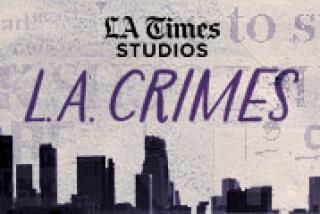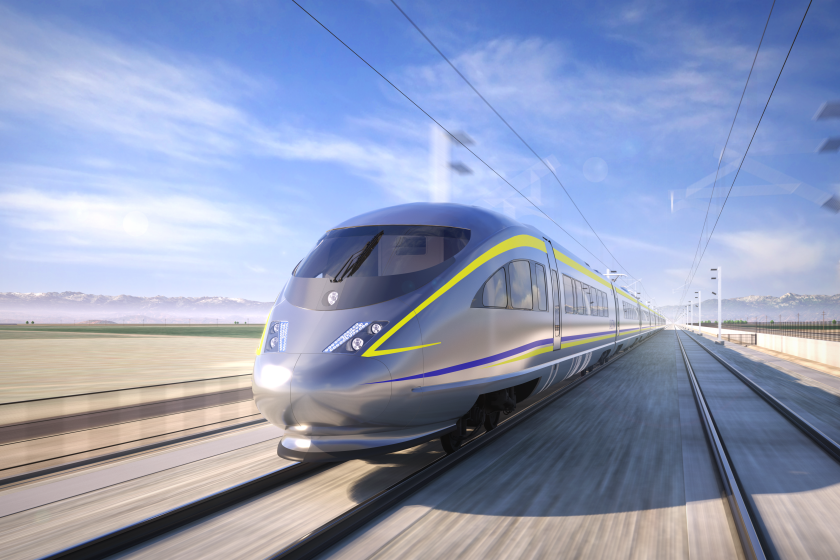Universal Shuts Earthquake Attraction for Two Days
- Share via
Visitors to Universal Studios Tour arrived Wednesday morning to find that the heavily promoted Earthquake attraction had been canceled because of the real quake that struck the Bay Area on Tuesday night.
“We are closing the attraction for 48 hours out of respect and as a sympathetic gesture,” said Joan Bullard, vice president of public relations for the tour. “We will continue to operate all other attractions as usual.”
The last customers on the tour Tuesday had already been through Earthquake when the 6.9 temblor struck at 5:04 p.m. The two-minute ride simulates an 8.3 quake--the size of the one that devastated San Francisco in 1906--and is designed, according to Bullard, as “a generic subway tunnel set in a bay area.”
She said that the attraction will resume its regular schedule on Friday.
The Universal Studios Tour is on the lot of Universal Studios, and the Earthquake attraction is a spin-off of Universal’s 1974 movie “Earthquake.” That film, which starred Charlton Heston and Ava Gardner, was set in Los Angeles, where a quake unleashes the waters of the Hollywood Reservoir onto a city already crumbled and ablaze.
Bullard said that the ride has been immensely popular since it was added to the tour on March 18 and credits it with increasing attendance that may push the 1989 total to a record 5 million. She said that nothing has been done to cancel advertising for the attraction but that it is unlikely the TV promo will air during the two-day shutdown.
Natural disasters have provided Hollywood with dramatic material from the earliest days, but the film community, perhaps because it was situated on the San Andreas Fault and didn’t want to tempt fate, resisted using earthquakes as subject matter for decades.
The first major film with an earthquake theme was the 1936 “San Francisco,” an extravagant production that used the real 1906 Bay Area temblor as the setting for a romantic drama starring Clark Gable, Jeanette MacDonald and Spencer Tracy.
The earthquake scenes in the 1940 caveman soap opera “One Million B.C.,” which starred Victor Mature and Carole Landis, were remarkable effects for the time and became stock footage for numerous later films.
But it wasn’t until special effects matured technologically in the ‘70s that Hollywood got serious about dramatically re-creating earthquakes, and there have been some eerie simulations since. Images of the collapsed span of the San Francisco-Oakland Bay Bridge on Tuesday night looked like film clips from the 1978 feature “Superman.”
In that film, perennial Superman nemesis Lex Luthor (Gene Hackman) concocted a scheme to detonate the San Andreas Fault to trigger an earthquake that would split California down the middle and turn Luthor’s desert property into ocean frontage. Among the devastation that Superman eventually reversed was the collapsing of a section of the Golden Gate Bridge. Richard Donner, who directed “Superman,” said that the images on his TV set Tuesday night looked like miniatures--small-scale models used by film makers--to him.
“It was really chilling, that (news image) of the car going over the edge” on the Bay Bridge, said Donner in a telephone interview Wednesday. “I don’t think I’ll ever make a movie like that again.”
Donner, the director of the recent action hit “Lethal Weapon 2,” said none of the earthquake scenes in “Superman” was based on actual scientific speculation. He said he might have chosen the Bay Bridge if that were the case; he used the Golden Gate Bridge simply because it was the better visual.
Coincidentally, when the quake hit Tuesday evening, Donner’s sister was on a plane landing at San Francisco International Airport. Hers was the last plane allowed to land before the runways were closed.
Donner said he has become very earthquake conscious in recent years and has an “earthquake room” at his Hollywood Hills home where he keeps two months’ worth of supplies for his family and their pets.
“Last night, when I was out walking the dogs, I opened the room and checked it out,” he said. “We tend to take it for granted (that we won’t get hit that hard here).”
Times intern Mary Helen Berg contributed to this story.
More to Read
Sign up for Essential California
The most important California stories and recommendations in your inbox every morning.
You may occasionally receive promotional content from the Los Angeles Times.













